MICHIGAN HISTORY
Drinking and dining in old Detroit

Detroit News employees are having a swell time at Adams Restaurant in Detroit in 1933. Incidentally, they're drinking Eidelweiss beer, a Chicago brew. Browse this gallery for other glimpses of Detroit drinking and dining scenes through the years.
The Detroit News Archives
Watched by his pals, a boy drinks a root beer in Detroit in the early 20th century.
The Detroit News Archives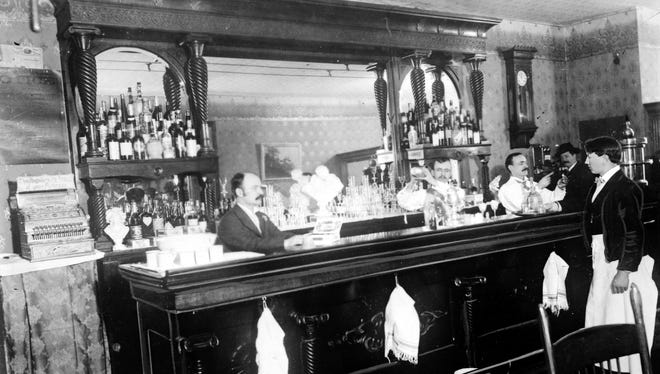
A waiter and bartenders are seen in the Garibaldi Saloon at 20 Monroe, circa 1898.
The Detroit News Archives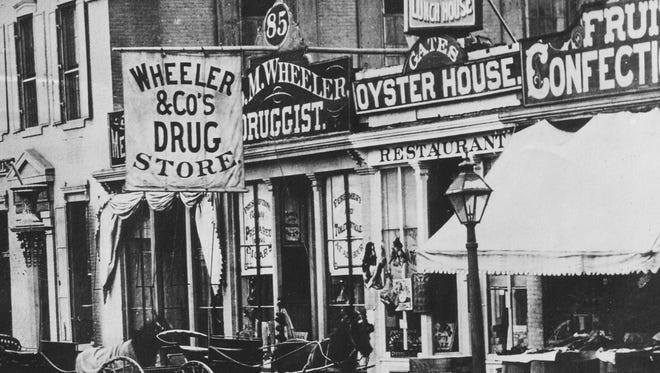
The Gates Oyster House is one of the businesses lining the west side of Griswold between State and Grand River around the turn of the 20th century.
The Detroit News Archives
Employees pose outside the Ferdinand Kuhn Saloon in Detroit in this undated photo. By 1915, Detroit had 1,700 saloons, roughly one for every 50 families.
The Detroit News Archives
Sharpe's Chop House & Saloon on Griswold Street was known as "a sporting and political headquarters." The building dated back to the 1830s. In the early 20th century, baseball scores were displayed on a balcony-level chalkboard.
The Detroit News Archives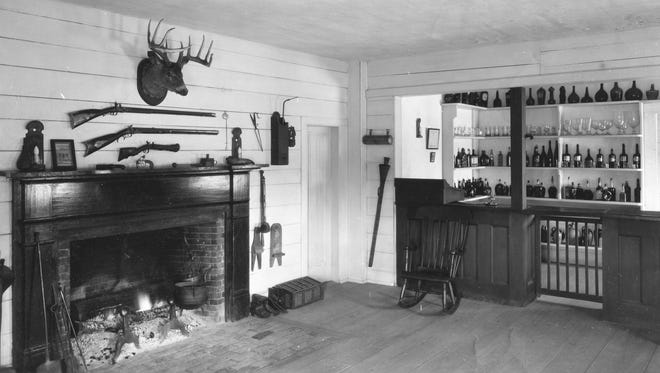
The bar area of the Botsford Inn is seen in an undated photo. Built as a home in 1836, it was converted into a tavern in 1841. Taverns served travelers, drovers and their crews, teamsters, local farmers, sometimes soldiers and families emigrating to the West.
The Detroit News Archives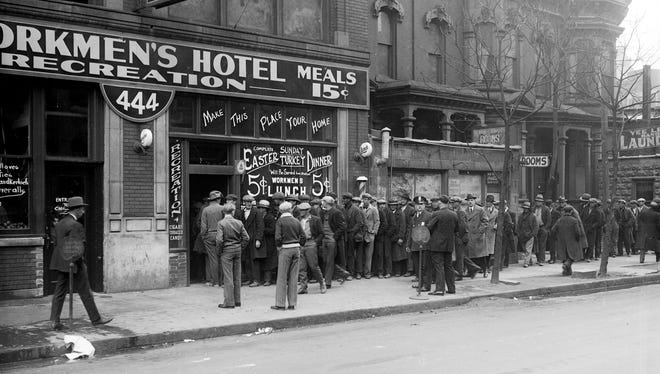
Men line up outside the Workmen's Hotel in Detroit for 5-cent Easter dinners in the 1920s. From the 1870s through the first half of the 20th century, shift workers often lived in lodging houses with no kitchen, depending on restaurants as their only source of cooked meals.
The Detroit News Archives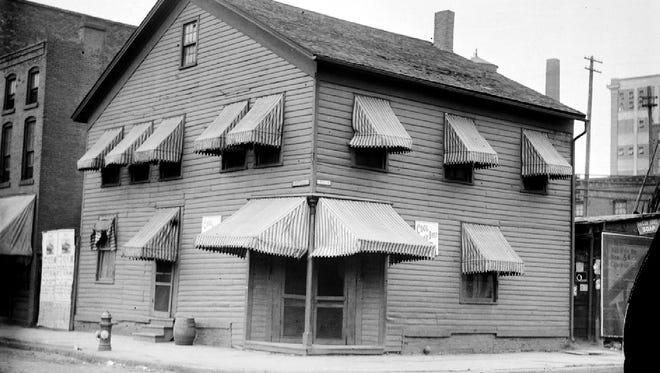
The notorious Bucket of Blood saloon on Hastings at Clinton is seen in the early 20th century. Entertainment included games of cards, craps and dice; prostitution; music, and often knife and gun play.
The Detroit News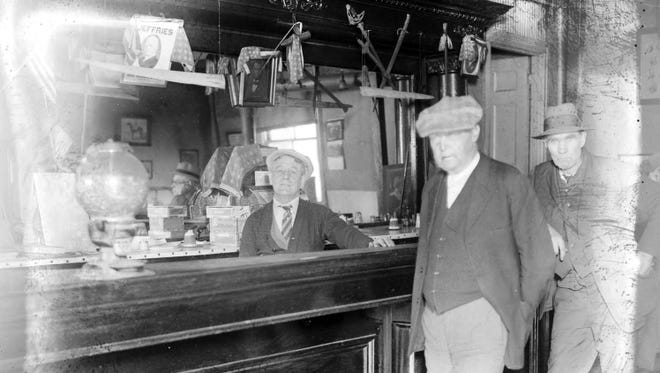
The Bucket of Blood was owned by Billy Boushaw, left, seen in 1929. A 1908 editorial said, "For the most part it is a tough set that frequent the place - scum." A portrait of Abraham Lincoln is seen behind Boushaw. The picture of "Jeffries" above the bar is likely Recorder's Court Judge Edward J. Jeffries.
The Detroit News Archives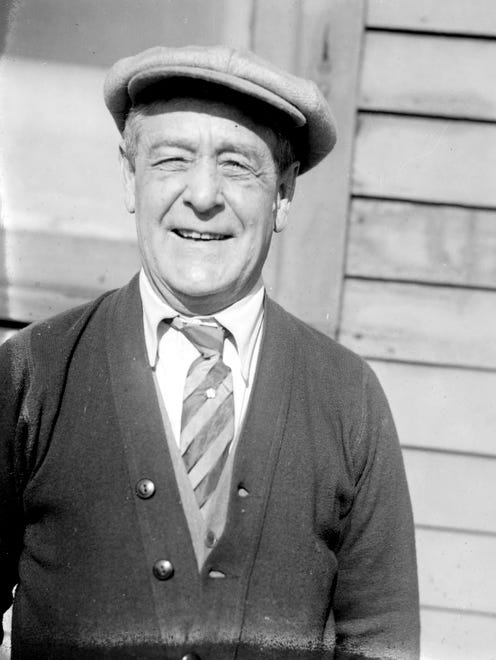
Saloon proprietor Billy Boushaw was said to have controlled the 1914 Detroit city election. He helped dock workers in the infamous river precinct and in return commanded their votes.
The Detroit News Archives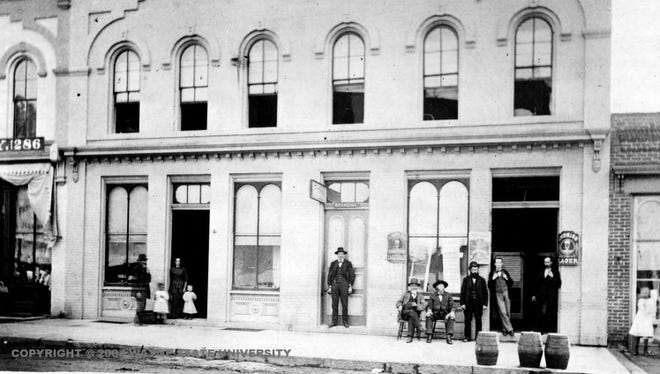
People lounge outside Peter Lutz's Boarding House and Saloon on Gratiot, date unknown. Prior to the 1870s, most single men lived in boarding houses, which provided room and food.
The Detroit News Archives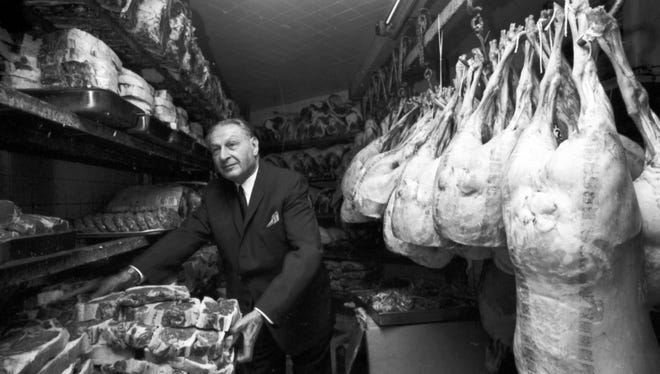
Carl Rosenfield takes a tray of chops from the meat locker at Carl's Chop House in 1966. He established the restaurant in 1923, and for decades it was a favorite dining spot for Detroiters. It closed in 2008.
The Detroit News Archives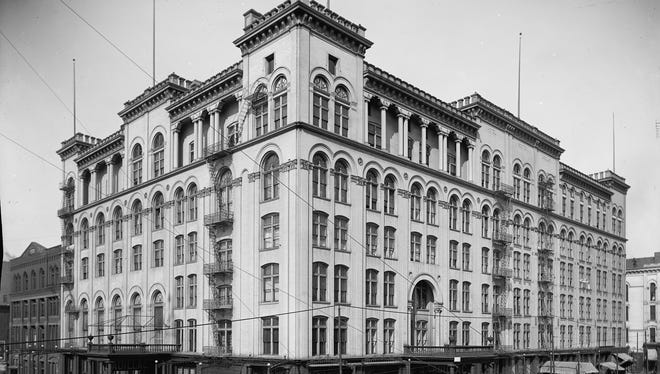
At the Hotel Cadillac Cafe in the original Hotel Cadillac, seen in 1907, dinner typically began with consomme, then fish, beef, turkey, duck, wild game and shrimp, all with sherbet served between meals and many choices of desserts. Waiters dressed in formal wear.
Library Of Congress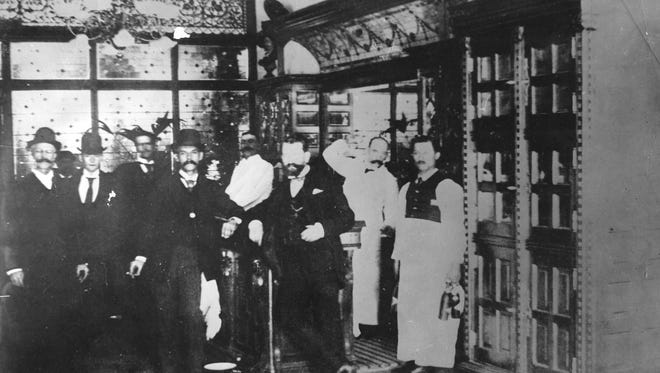
Gentlemen gather at the bar at the Hotel Cadillac, date unknown.
The Detroit News Archives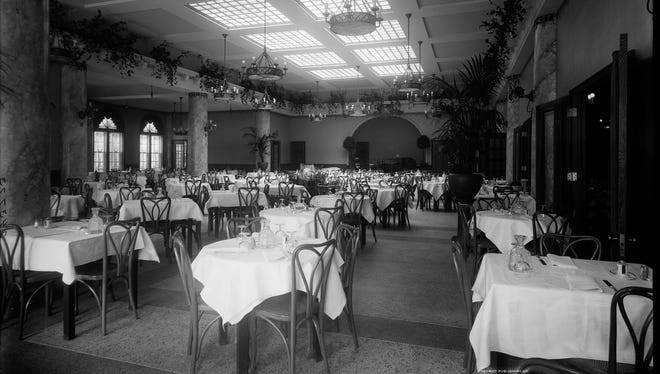
The main dining room of the Edelweiss Cafe in Detroit is seen circa 1910. In 1918, a series of riots broke out in Detroit when William K. Prudden, the state coal director for Michigan, ordered restaurants and all "non-essential businesses" closed, in a plan to save coal fuel during a winter shortage. Thousands of hungry and angry night workers hit the streets, and the order was rescinded.
Library Of Congress
The Detroit News photo files identify this picture as the "Ford Motor Company restaurant, 1929." What the chef is putting into milk bottles is anybody's guess.
The Detroit News Archives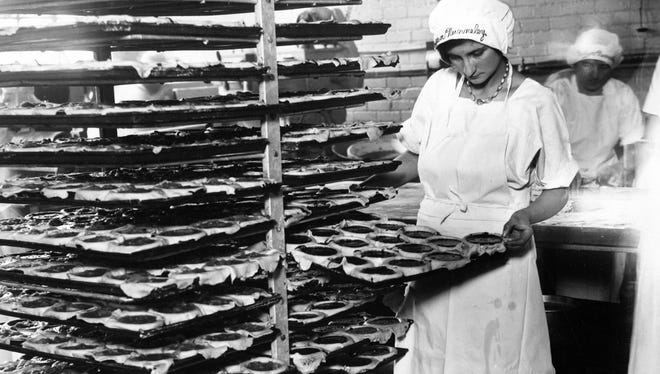
Another photo from the Ford Motor Co. restaurant in 1929 shows the kitchen staff preparing racks of some sort of pie.
The Detroit News Archives
A restaurant in a two-story commercial building advertises French and Italian specialties in 1928.
The Detroit News Archives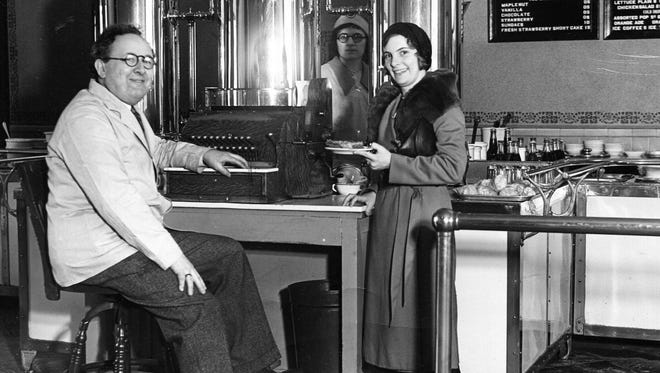
An employee with a piece of pie approaches the cashier of The Detroit News cafeteria line in 1931. The menu board lists items such as weiner schnitzel with noodles, 30 cents; hot beef sandwich, 15 cents; corn flake pudding, 7 cents; and ice cream sundae, 10 cents.
The Detroit News Archives, Detroit News Photo Archive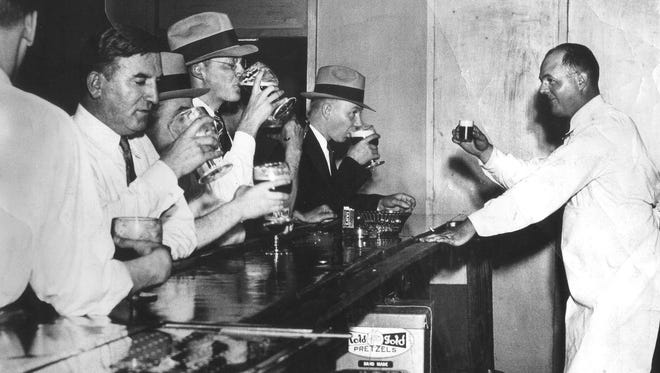
A bartender enjoys a round with his customers at a blind pig in Detroit during Prohibition. Blind pigs were lower-class, illegal establishments that served alcohol; speakeasies were higher-class, illegal businesses that also offered food and entertainment.
The Detroit News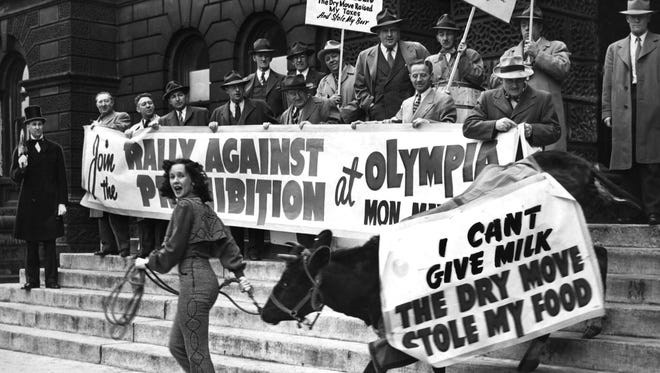
A rally against Prohibition included a stop on the steps of City Hall in 1932.
The Detroit News Archives
These participants in an anti-Prohibition parade in Hamtramck in 1932 stated their position simply and clearly.
The Detroit News Archives
A smuggler wears a simple device to help him smuggle multiple bottles of liquor under his coat during prohibition.
The Detroit News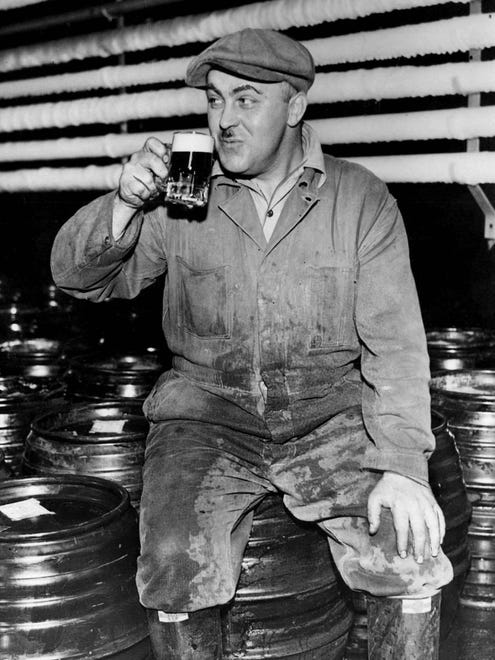
Theodore Gentile of Detroit celebrates the end of Prohibition with a cold beer in the cooler of the Tivoli Brewery in Detroit.
The Detroit News Archives
A chop suey restaurant on Grand River Avenue is seen in 1929. Chinese restaurants were the most popular ethnic restaurants in the early 20th century, with 12 of them in the city.
The Detroit News Archives
Decades before they became TV advertising icons, the Budweiser Clydesdales did real deliveries, like this one to a Detroit customer in 1933.
The Detroit News Archives
The J.B. Cocktail Bar at 723 Bates was photographed on Nov. 30, 1937, shortly after a man there "received knock-out drops and died," according to the photographer's notes.
The Detroit News Archives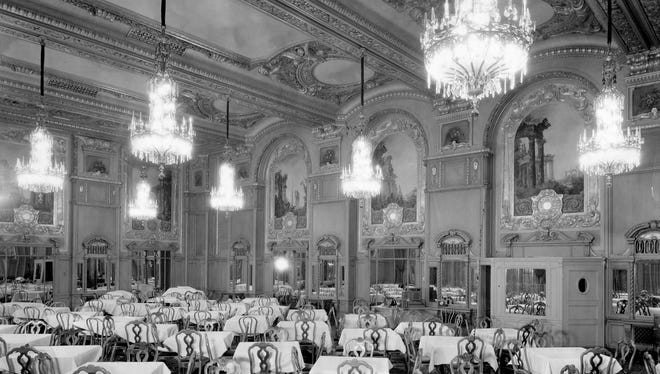
The Venetian Dining Room was one of three dining rooms in the elegant Book-Cadillac Hotel in the 1920s. The hotel also had a coffee shop and a tea room.
The Detroit News Archives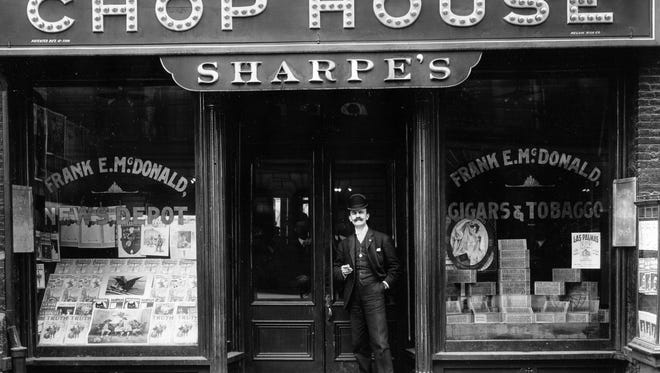
Sharpe's Chop House was still going strong in 1934.
The Detroit News Archives
The Flood Bar & Grill is seen on Jan. 6, 1937.
The Detroit News Archives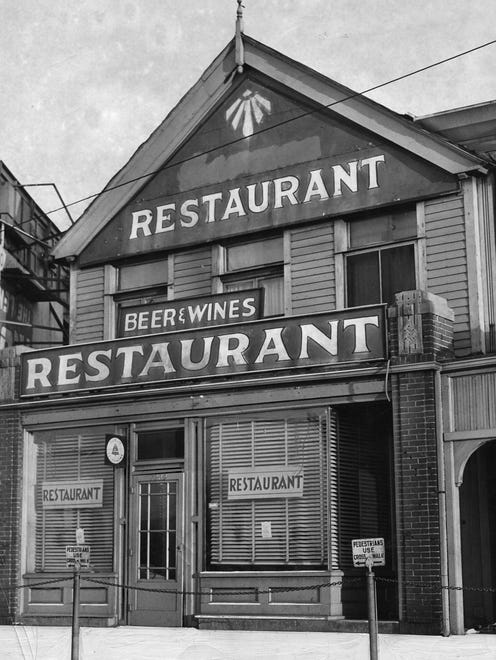
Max Stephan's Place German Restaurant is seen in 1942. As early as the 1860s, advertisements appeared in Detroit newspapers for Italian, French, Greek, Venetian, German and Polish restaurants. By 1899 the Detroit had 169 restaurants.
The Detroit News Archives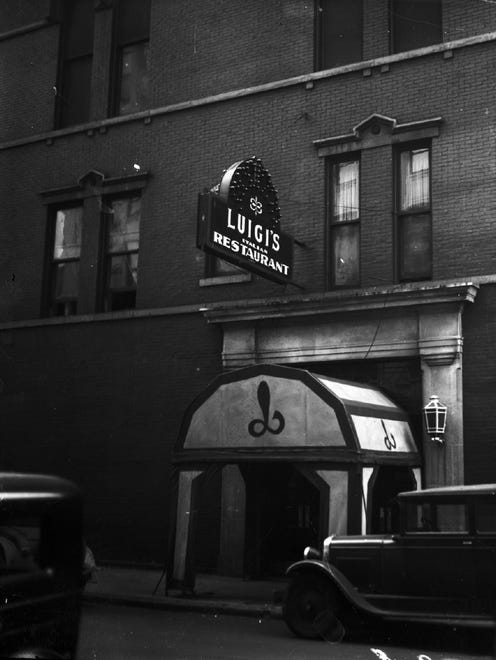
Luigi's Italian Restaurant, seen in 1928, featured a monogrammed entry awning.
The Detroit News Archives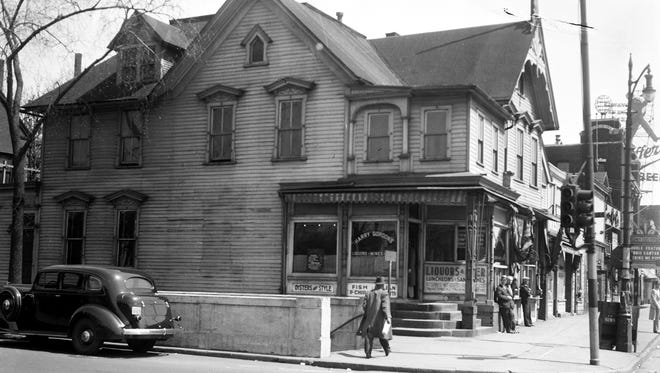
Moesta Tavern, at the corner of Jefferson and East Grand, was once one of the city's most famous saloons. It's seen in the 1930s.
The Detroit News Archives
The Northwood Inn on Woodward and Catalpa in Berkley was a popular Detroit-area tavern. While the term "tavern" was used loosely, it typically meant a restaurant and bar with rooms for overnight travelers outside the city, located on a major road.
The Detroit News Archives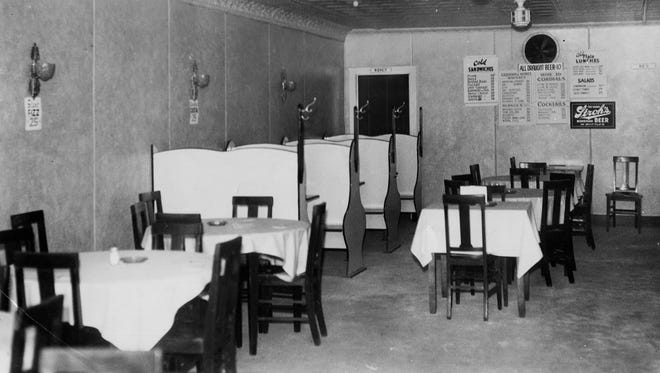
Sandwiches, salads and Stroh's Beer were on the menu at the Terminal Bar in 1935.
The Detroit News Archives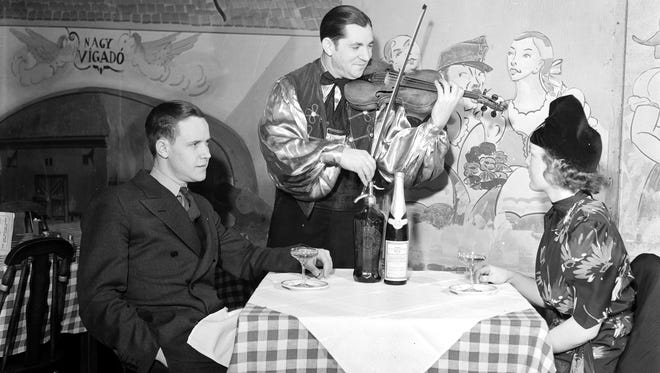
In 1937, The Detroit News reported that "Willie Horvath, leader of the gypsy orchestra at (Detroit's) Hungarian Village, will play your favorite tune while you dine. If you can't remember the name, just hum or whistle a few bars and he'll take care of the rest."
The Detroit News Archives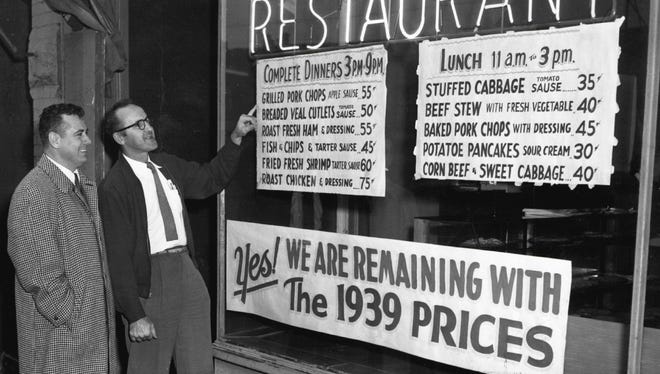
Joseph Tuczak, right, proprietor of a restaurant on Detroit's west side, and his friend John Bombyk look at the price of meals displayed in the window of Tuczak's eating house on Nov. 23, 1939. The priciest item was roast chicken and dressing, for 75 cents.
The Detroit News Archives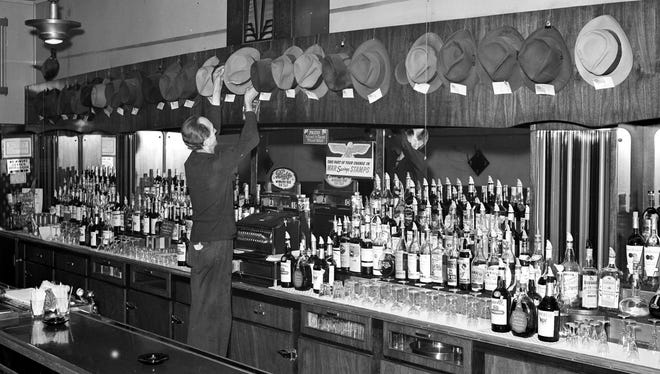
In September 1942, the barkeeper at the Kenwood Bar hangs the hats of customers who have gone into the service during World War II. Signs announce "Blatz on tap" and "Take part of your change in war savings stamps."
The Detroit News Archives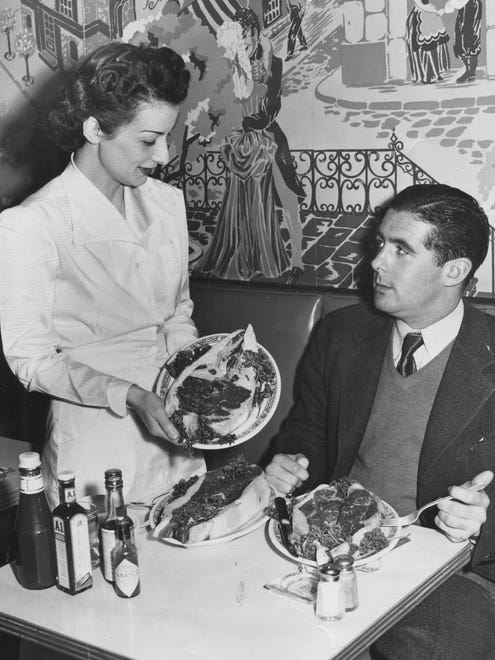
What did a world-class distance swimmer eat in 1949? Apparently big slabs of raw meat. Jerry Kerschner of Ohio (nickname "Champ of the Gulf Coast Waters") poses at Carkins Restaurant with dietician Vicki Harrison.
The Detroit News Archives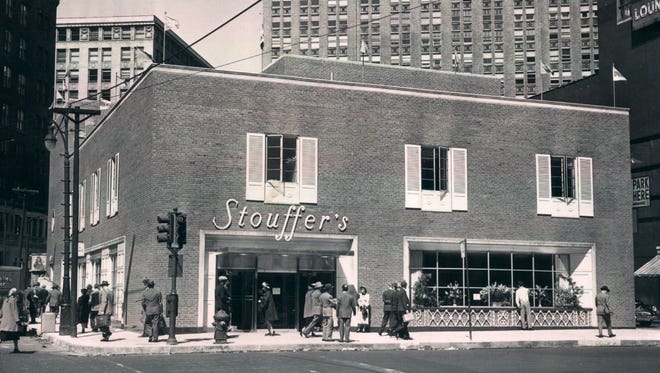
Before it entered the frozen food business, Stouffer's was a creamery and a restaurant in suburban Cleveland. It opened its first Detroit restaurant in 1929, and this new restaurant in 1949.
The Detroit News Archives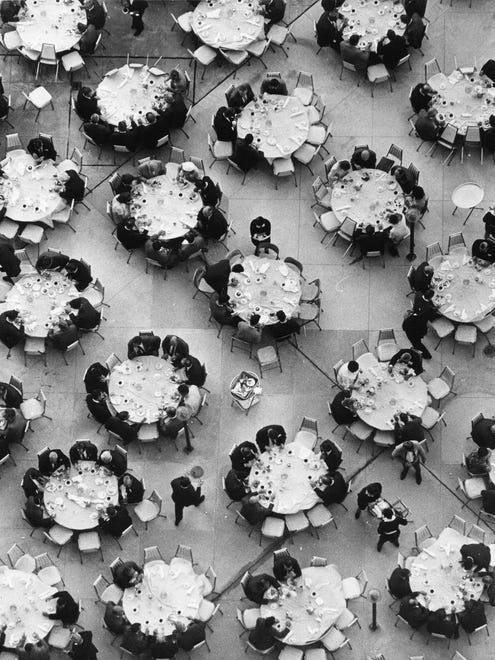
The terrace restaurant at the Hotel Pontchartrain hosts a lunchtime crowd in 1968.
The Detroit News Archives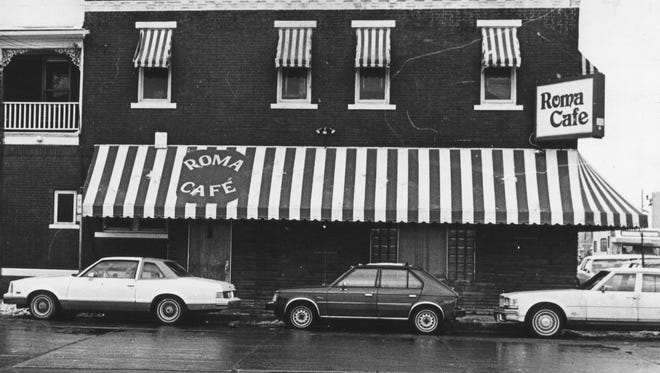
Roma Cafe at 3401 Riopelle, seen here in 1980, began serving Italian cuisine in 1890 and remains in business today as Detroit's oldest restaurant.
The Detroit News Archives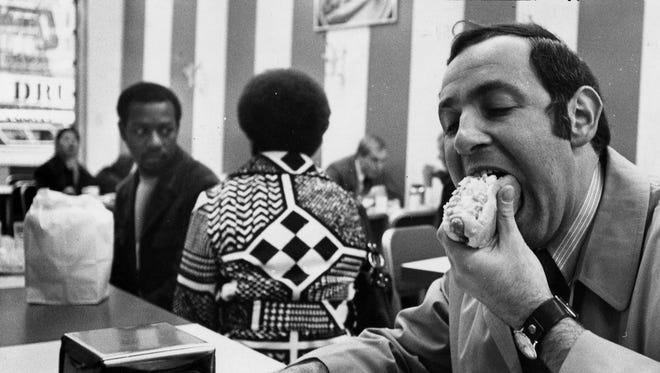
Then as now, customers chow down at the American Coney Island on Lafayette in 1970.
The Detroit News Archives